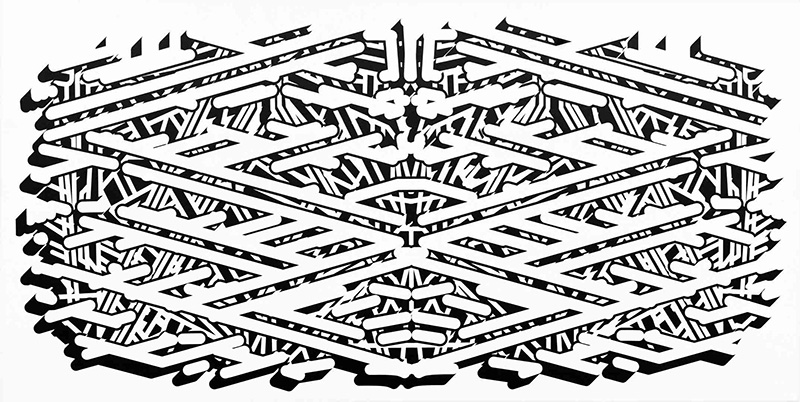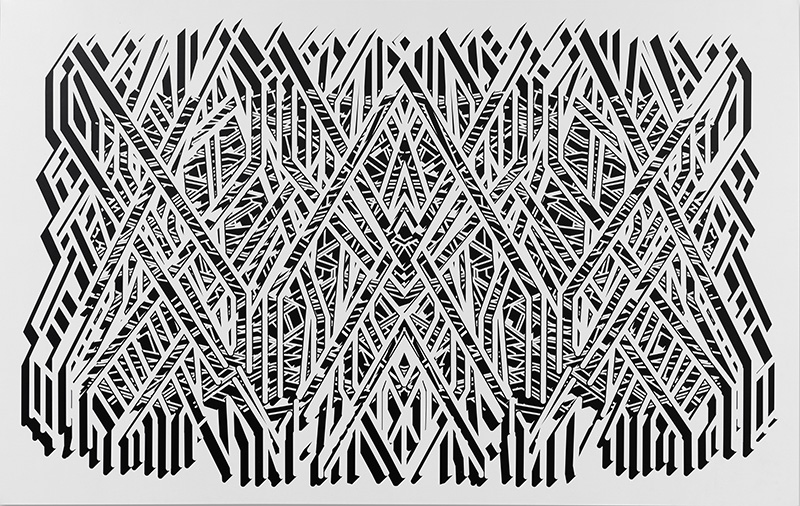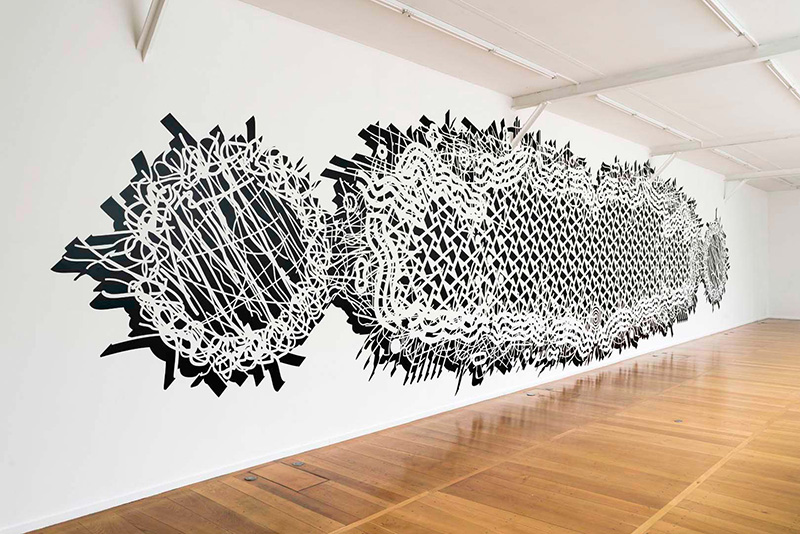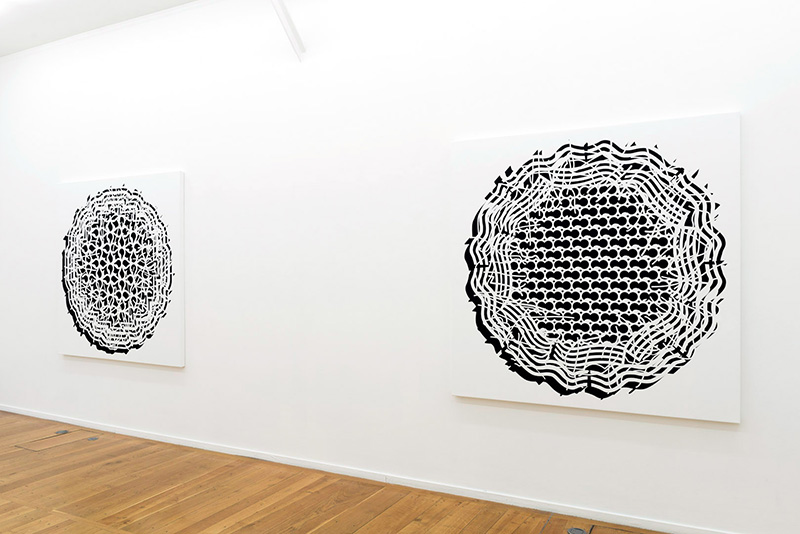INTERVIEW: Pablo Siquier
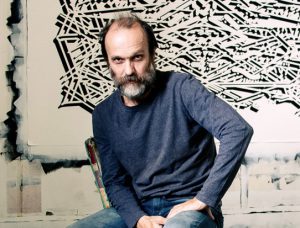 Pablo Siquier is part of a generation of artists who emerged in Buenos Aires at the end of Jorge Rafaél Videla’s bloodthirsty junta (26/3/76-29/3/81). Pablo Siquier’s work resists historical context and interpretation, he is using mainly black and white color with minor aberrations in his paintings and drawings that often exceed the dimensions of the canvas and extend either into the space or on the walls of the Gallery and the Museum. Siquier explores the relationship between the perfect and the imperfect: after years of research with precise forms and drawings that are not the result of an expressive gesture, but instead calculations and algorithms generated by custom computer software used for the creation of complex compositions where art converses and interacts with architecture. On the occasion of “Bruit”, his solo exhibition at Xippas Gallery in Paris, Pablo Siquier says “…This is what happens with contemporary city. Any notions of purity can´t survive for a long time. Ideas, information and identities are contaminated constantly. My work is a pale celebration of diversity, blend and impurity. Any attempt of order that does not contemplate mixity and impurity derives in authoritarianism.…”
Pablo Siquier is part of a generation of artists who emerged in Buenos Aires at the end of Jorge Rafaél Videla’s bloodthirsty junta (26/3/76-29/3/81). Pablo Siquier’s work resists historical context and interpretation, he is using mainly black and white color with minor aberrations in his paintings and drawings that often exceed the dimensions of the canvas and extend either into the space or on the walls of the Gallery and the Museum. Siquier explores the relationship between the perfect and the imperfect: after years of research with precise forms and drawings that are not the result of an expressive gesture, but instead calculations and algorithms generated by custom computer software used for the creation of complex compositions where art converses and interacts with architecture. On the occasion of “Bruit”, his solo exhibition at Xippas Gallery in Paris, Pablo Siquier says “…This is what happens with contemporary city. Any notions of purity can´t survive for a long time. Ideas, information and identities are contaminated constantly. My work is a pale celebration of diversity, blend and impurity. Any attempt of order that does not contemplate mixity and impurity derives in authoritarianism.…”
By Efi Michararou
Photo: Xippas Gallery Archive
Mr. Pablo Siquier, spectating your work, we observe that the use of black and white is your characteristic. Although early in your carrier you had used color in your artwork, you turned to B&W. In your world that seems to be composed of futuristic cities-places, what is the meaning of non-color?
The truth is that I am quite tired of black and white. But it occurs that the mural is a part of the series where everything is about shadows. There are white forms over white ground, that become visible with the shadows that they project. Black is the natural color to represent shadow so any other color becomes superfluous and unjustified, in a way unnecessary.
The geometric patterns that you use on the canvas sometimes extend in the space of the gallery or the museum. What is the relation between art, architecture, locus and atopia? Changing the balances, are you creating your own utopia?
Almost all contemporary art in one way or another evokes the city. Even when art talks about body or nature, it makes it from an urban point of view. And if we talk about the city, the architecture is, evidently, the main protagonist. Each city is a deformed catalogue of styles where expressions of great stylistic purity coexist with improbable formal hybridizations. It is also inseparable from the idea of the city as an exchange and a continuous abysmal flow of information. Buenos Aires, San Paulo or Mexico City are in a way monstrous versions of all this, where optimism is hard to sustain. My work is more an idealization of the big contemporary city rather than a utopia.
Is your work the reflection of the contemporary city? What is the place of the human in it? Is it finally uninhabitable?
Cities are increasingly hostiles. But my desire is that people get to feel affectively questioned by the formal repertory of my work. That somewhere in their brain or their heart they’ll have an opportunity to recognize elements that accompany them on their living in the city. My work also can be read as the product of a specific taste and a social class in a pre-military dictatorship Argentina, which almost disappeared nowadays. A middle class, cultivated, moderate and significant, hard to find in other Latin American countries, which was very characteristic of the country, and especially of Buenos Aires in the 60’s and the beginning of 70’s.
As we know you have been strongly influenced by Op-Art and Iannis Xenakis Music, where are meeting face to face music and visual arts? Which are the converges and which the divergents?
The abstract art and the music will always have something to say about each other. When I was kid, I found first in Brian Eno and Robert Fripp and later in contemporary composers, the references that I couldn’t find in visual arts. In Steve Reich the repetition as generation of forms, is omitting melody. In John Cage the radicalism of his ideas. In Xenakis what fascinated me and actually still does is the excessive cerebral and mathematic treatment of the material and its organization to obtain a tearing expressive and physic result. Visual art is the only one that still continues the struggle by trying to expand the limits of it’s own definition. The music like the rest of the artistic practices have given up the fight. After all the experimentations of XXth century, now we know more or less that a writer will write a book and that a musician will present his piece. In visual art we don´t have that certainty; its only condition is that there should be no previous conditions. In fact, if a film director or a theatre author or whatever is extremely radical, he could end up in Documenta.
You had said that “If I have to summarize in two words the themes that inspire my work, these would be disease and contamination” can you tell us more on these themes?
It’s interesting to observe how an entire aesthetic apparatus can be transformed when it´s displaced and applied in a different place.The Italian model of church copied and bastardized in the marvelous cathedrals of Spanish colonies in America. The modification of the European Constructivism formal repertory in the serial production in USA. And a lot of other examples… Like the case of Raul Lozza, a great Argentinian master of concrete art in the 40’-50’s, affiliated to the Communist Party. His perfectly pure straight forms of constructivist influence went, in the context of Buenos Aires, from positive, healthy and social intention to an individual, obsessive and solitary practice. This is what happens with contemporary city. Any notions of purity can´t survive for a long time. Ideas, information and identities are contaminated constantly. My work is a pale celebration of diversity, blend and impurity. Any attempt of order that does not contemplate mixity and impurity derives in authoritarianism.
Info: Xippas Gallery, 108 rue Vieille du Temple, Paris, Duration: 25/3-13/5/17, Days & Hours: Tue-Fri 10:00-13:00 & 14:00-19:00, Sat 10:00-19:00, www.xippas.com
First Publication: www.dreamideamachine.com
© Interview-Efi Michalarou
